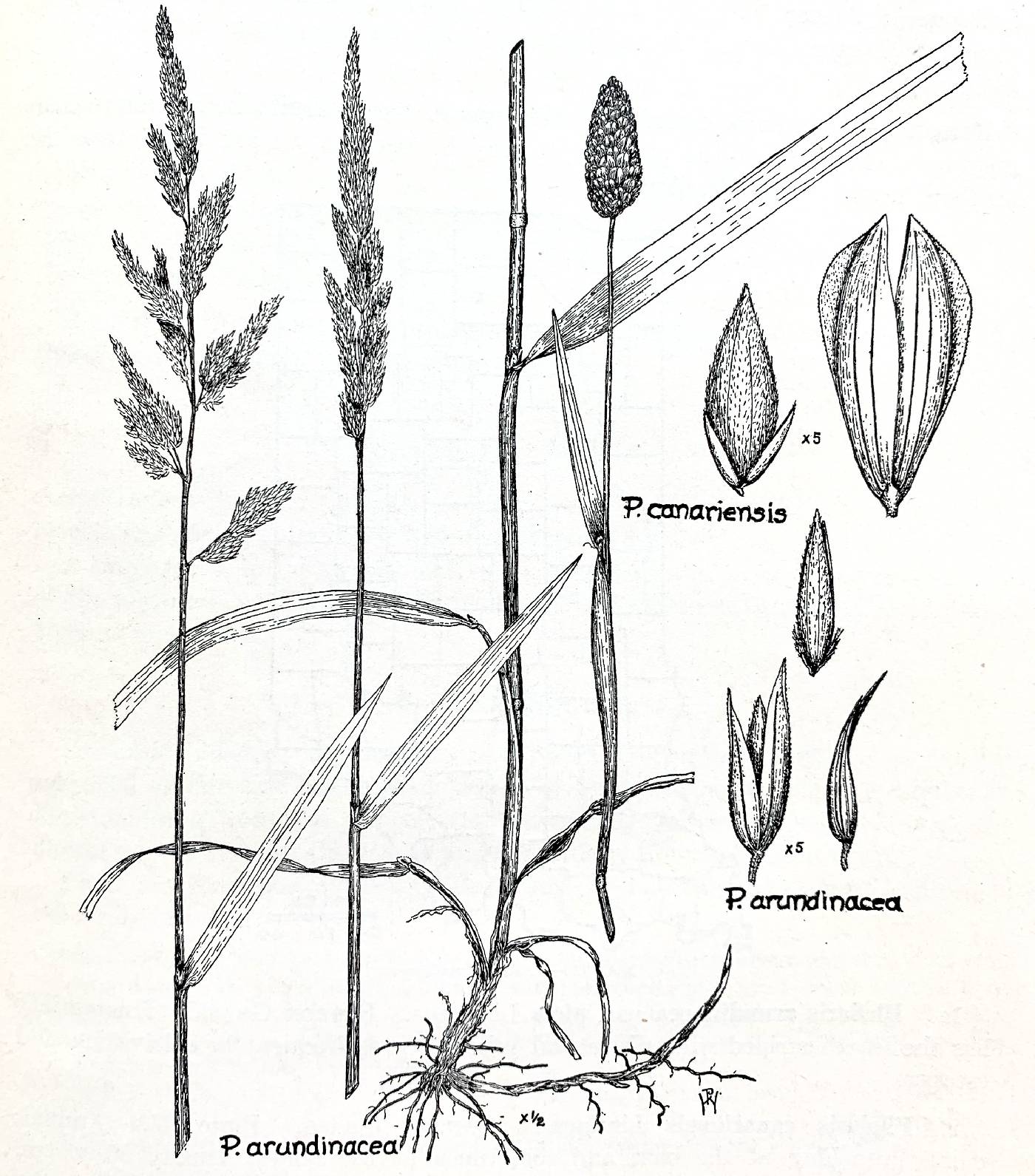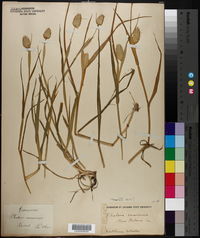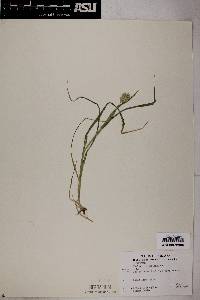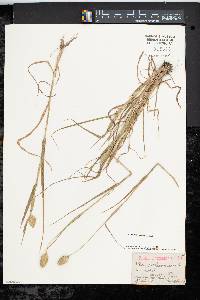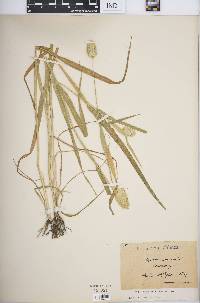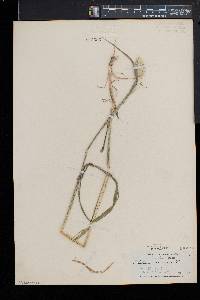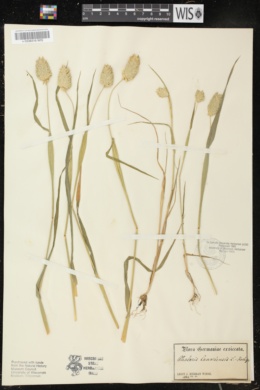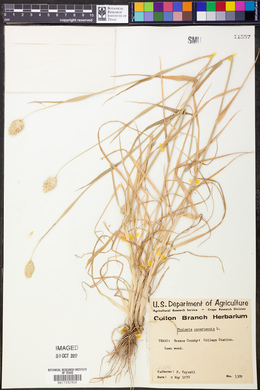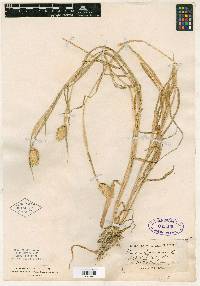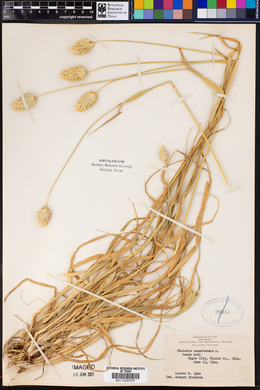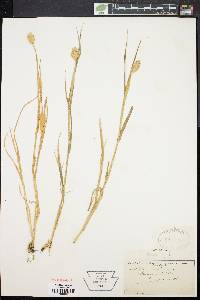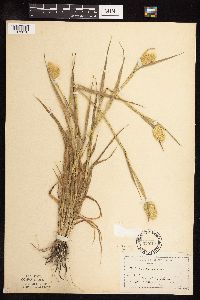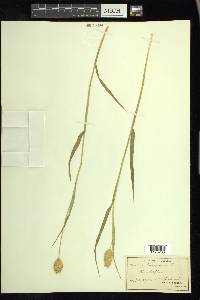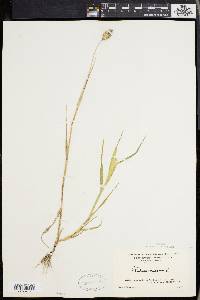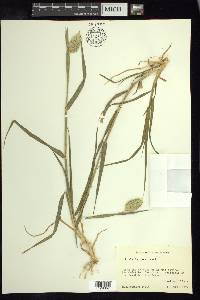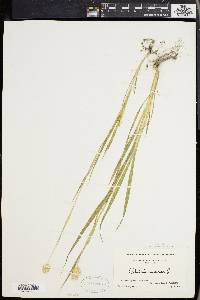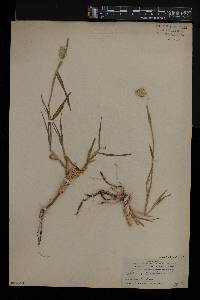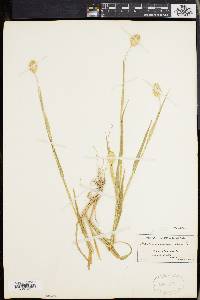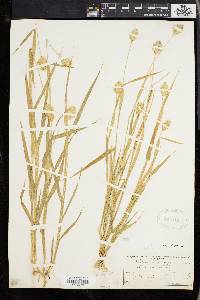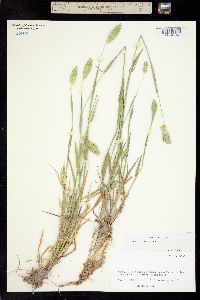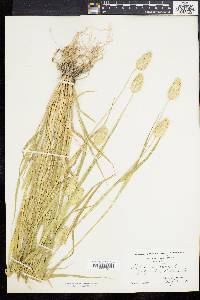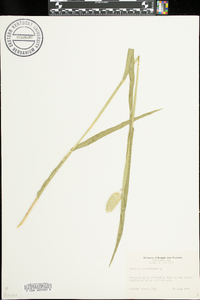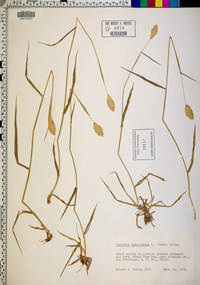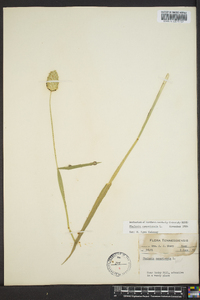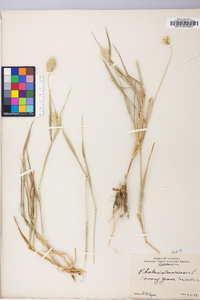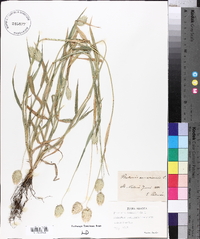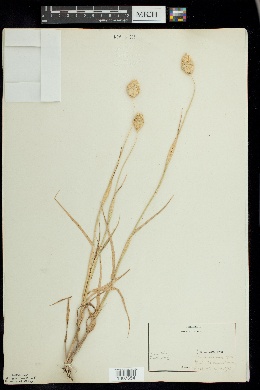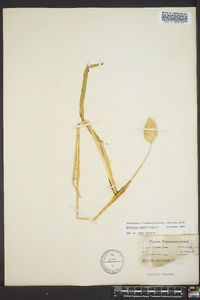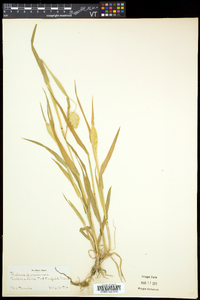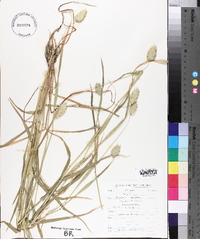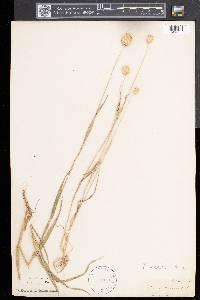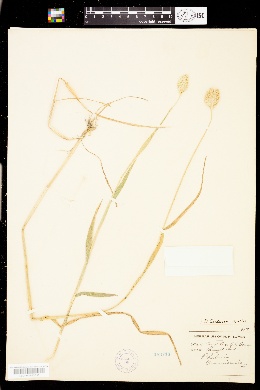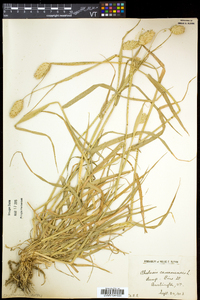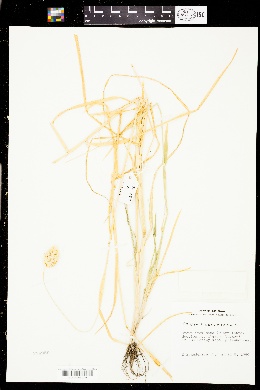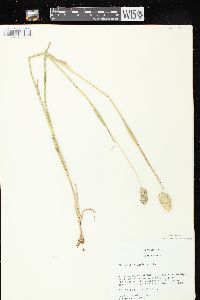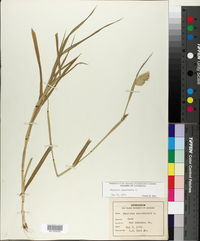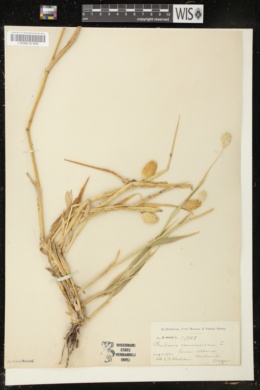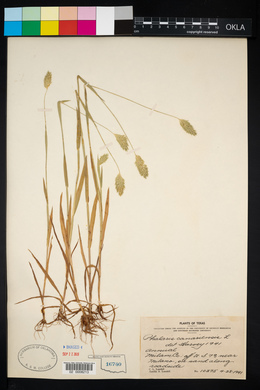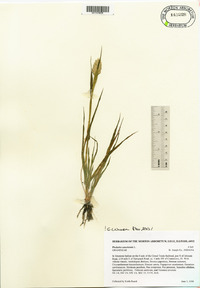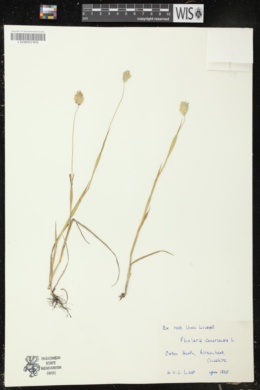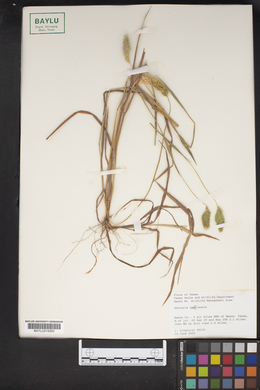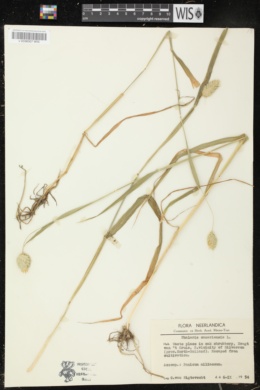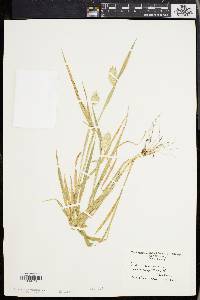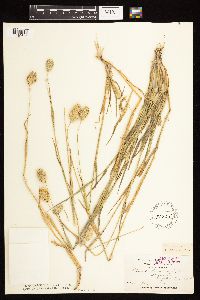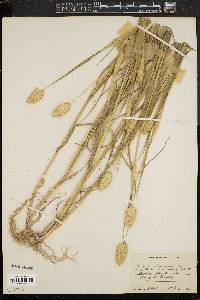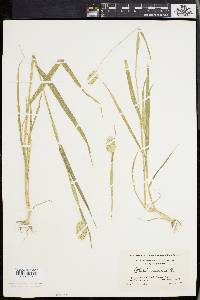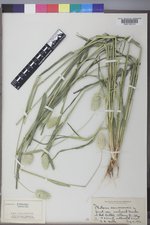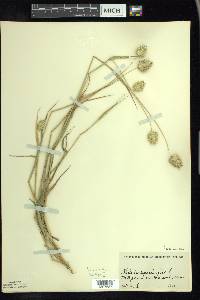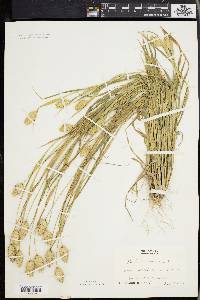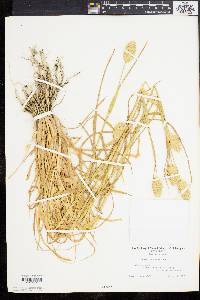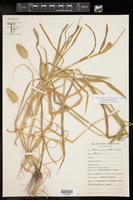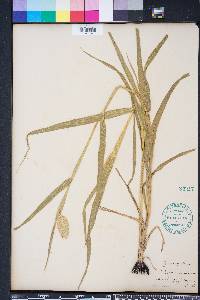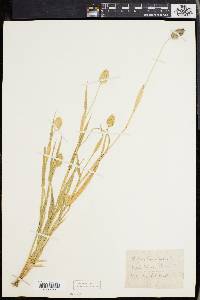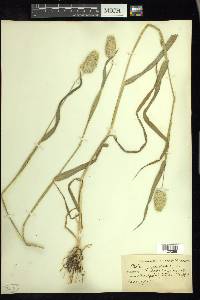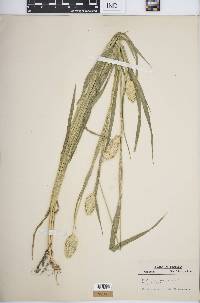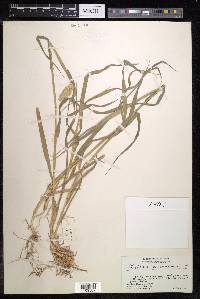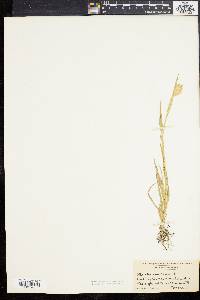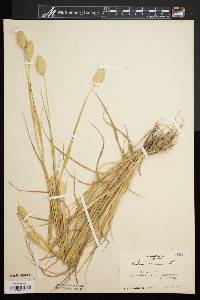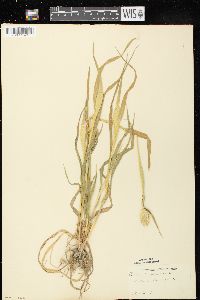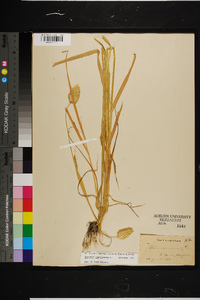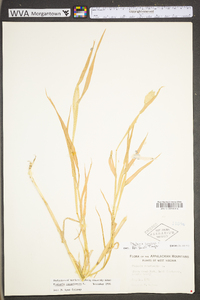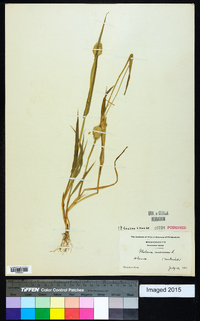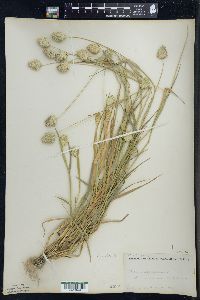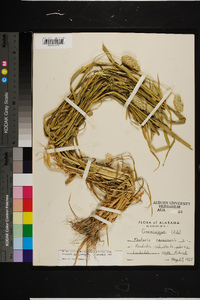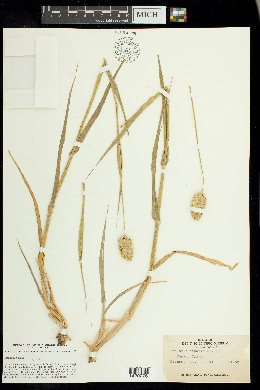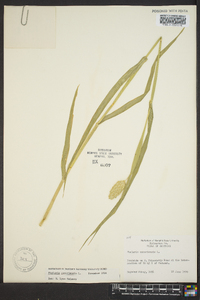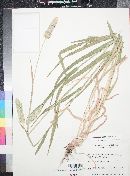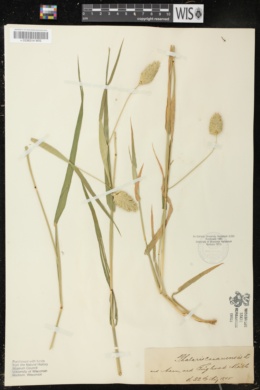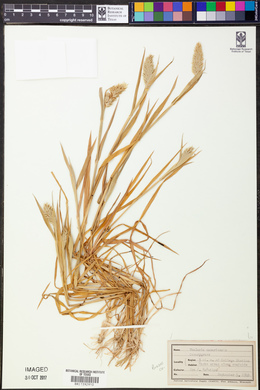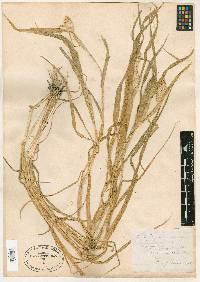Phalaris canariensis
|
|
|
|
Family: Poaceae
Common Canary Grass, more...annual canarygrass, Alpiste des Canaries, Phalaris des Canaries
[Phalaris avicularis Salisb., morePhalaris canariensis f. bracteata Jansen & Wacht., Phalaris canariensis f. colorata Jansen & Wacht., Phalaris canariensis f. vivipara Junge, Phalaris canariensis subsp. typica Posp., Phalaris canariensis var. debilis Tocl & Rohlena, Phalaris canariensis var. subcylindrica Thell., Phalaris canariensis var. tenuis Jansen & Wacht., Phalaris canariensis var. villosula Jansen & Wacht., Phalaris ovata Moench] |
Plants annual. Culms 30-100 cm. Ligules 3-6 mm, rounded to obtuse, lacerate; blades 3-25 cm long, 2-10 mm wide. Panicles 1.5-5 cm long, 1.5-2 cm wide, ovoid to oblong-ovoid, continuous, not lobed, truncate at the base; branches not evident, the spikelets borne singly, not clustered. Spikelets homogamous, all spikelets with a bisexual floret; florets 3; disarticulation above the glumes, beneath the sterile florets. Glumes 7-10 mm long, 2-2.5 mm wide, smooth, mostly glabrous, sometimes sparsely pilose between the veins, keels winged, wings to 0.6 mm, widening distally, lateral veins inconspicuous, smooth, apices rounded, mucronate; sterile florets 2, equal or subequal, 2-4.5 mm, 1/3 or more the length of the bisexual florets, lanceolate, sparsely pubescent, acute; bisexual florets 4.5-6.8 mm, ovate, densely pubescent, shiny, stramineous to gray-brown; anthers 2-4 mm. 2n = 12. Phalaris canariensis is native to southern Europe and the Canary Islands, but is now widespread in the rest of the world, frequently being grown for birdseed. The exposed ends of the glumes are almost semicircular in outline, making this one of our easier species of Phalaris to identify. FNA 2007, Gould 1980 Common Name: annual canarygrass Duration: Annual Nativity: Non-Native Lifeform: Graminoid General: Annual with somewhat geniculate and branching stems 30-100 cm. Vegetative: Blades flat to folded, 3-25 cm long, 2-10 mm wide, often shorter on the main stems, ligules 3-6 mm, rounded to obtuse, lacerate. Inflorescence: Panicles 1.5-5 cm long, 1.5-2 cm wide, ovoid to oblong-ovoid, continuous, not lobed, truncate at base, branches not evident, spikelets are borne singly rather than clustered; homogamous spikelets, spikelets with a bisexual floret, 3 florets, disarticulation above the glumes, beneath the sterile florets; glumes 7-10 mm long, 2-2.5 mm wide, smooth, mostly glabrous, sometimes sparsely pilose between the veins, keels winged, with wings to 0.6 mm, rounded and mucronate; 2 sterile florets, one third or more the length of the bisexual florets, lanceolate, sparsely pubescent. Ecology: Introduced and widespread throughout the region. Notes: The exposed ends of the glumes are almost semicircular in outline which helps to identify this species. Ethnobotany: Unknown Etymology: Phalaris is from Greek phalaros, having a patch of white, crested, or phalos, shining, bright, white, while canariensis means of or from the Canary Islands. Synonyms: None Editor: SBuckley, 2010 Erect annual 3-10 dm; main cauline lvs mostly 4-10 mm wide; ligules 4-8 mm; infl 1.5-4 cm, dense, ellipsoid; glumes 7-10 mm, strongly winged along the keel distally, the midvein marked by a broad green stripe; sterile lemmas 2.5-4.5 mm, at least 1.5 mm wide, rather sparsely and finely hairy or subglabrous; fertile lemma 5-7 mm, densely and finely appressed-hairy; 2n=12. Native of Europe, intr. throughout most of N. Amer., but seldom abundant. Used commercially for canary-seed. Gleason, Henry A. & Cronquist, Arthur J. 1991. Manual of vascular plants of northeastern United States and adjacent Canada. lxxv + 910 pp. ©The New York Botanical Garden. All rights reserved. Used by permission. |

